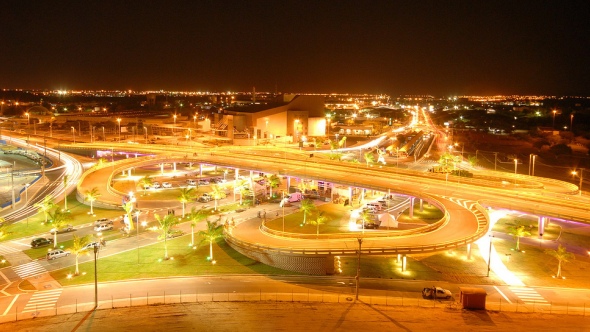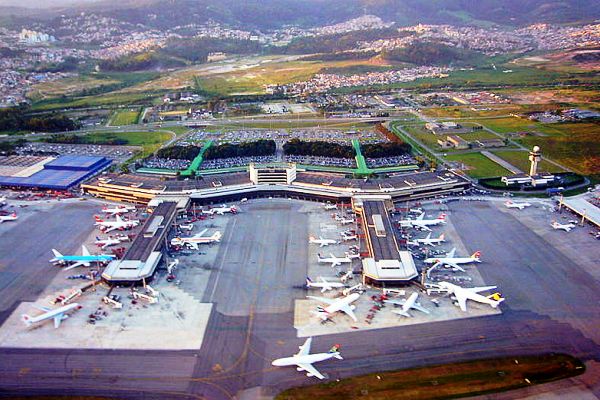Brazil: Transportation Sector Analysis
Brazil suffers from a slow development and is subject to strong regional differences in terms of transport infrastructure. The country’s fast growing economy and upcoming events, such as the World Cup in 2014 and the Olympics in 2016, are placing increasing demands on the transportation system.

Brazil: Transportation Sector Analysis
Written by Victor de Andrade Lopes
Transportation in Brazil serves a crucial function. The country has the second highest number of airports in the world, one of the five longest highway systems, a soaring automobile industry, and almost 200 hundred million people who need to cross the country.
The road system is the 4th longest worldwide at almost 1.8 million kilometers long, just behind the U.S., China, and India. Most goods are therefore transported by trucks, which are slower and take up valuable space in urbanized areas.
Yet the transportation system, while extensive, proves itself as highly flawed. The system is marked by crowded airports, uncomfortable public transportation, and badly preserved roads. With the 2014 FIFA World Cup and 2016 Olympic Games quickly approaching, it is critical that the Brazilian government intervenes in transportation so that all people and cargo can be carried throughout the country with both safety and speed.
Brazil’s history within the past century highlights some of the distinguishing features of the transportation evolution. Since President Washington Luís and his famous motto “To govern is to build roads”, Brazil has been investing massive amounts of capital, time and human resources in building thousands of kilometers of roads that cross the entire nation.
Large countries have a tendency to open long railways for cargo transportation, but Brazil defies this inclination. Its railway system has a length that totals less than 30,000 kilometers, which makes it only the 11th longest in the world. The road system, on the other hand, is the 4th longest worldwide at almost 1.8 million kilometers long, just behind the U.S., China, and India. Most goods are therefore transported by trucks, which are slower and take up valuable space in urbanized areas.
Airports will be essential during the World Cup, yet the government has not devoted sufficient efforts to expanding major Brazilian airports. Since the 1994 Cup in the USA, teams and supporters have not been accustomed to spending three to five hours inside a plane to travel from one stadium to another, which raises the need for fine infrastructure in the airports.
According to 2011 research by Ipea (Institute of Applied Economic Research), more than half of the World Cup airports are unlikely to be ready in time for the competition. Problems continue to progress, with lines getting longer and delays becoming more frequent. With the expected growth in the number of passengers, the future may be unfavorable.
State governments complain about difficulties in obtaining investments from the federal sphere. Renato Casagrande, Governor of the southeastern State of Espírito Santo, complains about the time it takes for investments by the federal government to reach their targets. “Another great challenge is investment in infrastructure and we are extremely keen to get things done,” Casagrande said. “We are determined in the construction and implementation of development projects, but we are being slowed down by the time it takes for public investments in infrastructure to be made. Here in Espirito Santo, as in many other States, the ports, airports, roads, and railroads are under federal government control, so the time it takes for these investments is one of the main challenges in order to sustain our growth.”
Jorge Batista da Silva Filho, President of the Jorge Batista Group, a conglomerate of pharmaceutical companies in Northeastern Brazil based in Piauí State, agrees with Casagrande and adds, “Roads, railway transport, and communication are still an issue and we are working towards fighting these difficulties. This is not only the reality in Piaui but also in other states of the Northeast. I would say that the biggest challenge lies in the road infrastructure.”

The problem becomes critical in regards to the large cities. Traffic jams in Brazil are infamous. The issue is notable in Brasília, the planned capital of Brazil, which is designed to house half a million people but serves as a home to four times its maximum capacity.
David José de Matos, President Director of METRO DF (Metropolitan Company of the Federal District of Brazil), summarizes the paradigm of public transportation in major Brazilian cities. “We have to make the population leave their cars at home and use the public transport system,” de Matos said. “For this to happen, we have to offer a public transport with good quality that can guarantee them a transport at the time they leave and need to return home after a day’s work and also that the routes we assure are not that far from their homes and workplaces.”
Essentially, the Brazilians who live in large urbanized areas have two options. They can elect to be stuck in overcrowded buses and urban trains, subjecting themselves to pickpockets who steal cellphones and purses or they can buy a car and be stuck in traffic with the comforts of music, air-conditioning, and soft seats. The majority select the latter option, resulting in cars occupying almost 80% of the streets during rush hour. Cities like São Paulo have 3.8 million cars traveling its roads daily.
To counteract the lack of proper infrastructure, the Brazilian government has just announced a national investment plan of 100 billion reais, equivalent to $50 billion. Aiming not only at the improvement of transportation in Brazil as a whole, president Dilma Rousseff also expects to reactivate the Brazilian economy with the plan, which may grow a mere 2% in 2012 as opposed to the 2.7% in 2011.
The plan aims to transform 5,700 km of single line roads to double line highways and add 8,000 kilometers of railways, which would increase it by approximately 26%. The plan also includes three new harbors (one in Amazonas, one in Espírito Santo, and the other in Bahia). Given the past years that have been filled with many plans and little action, the future of such projects remains uncertain.